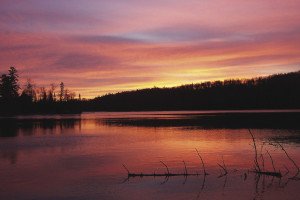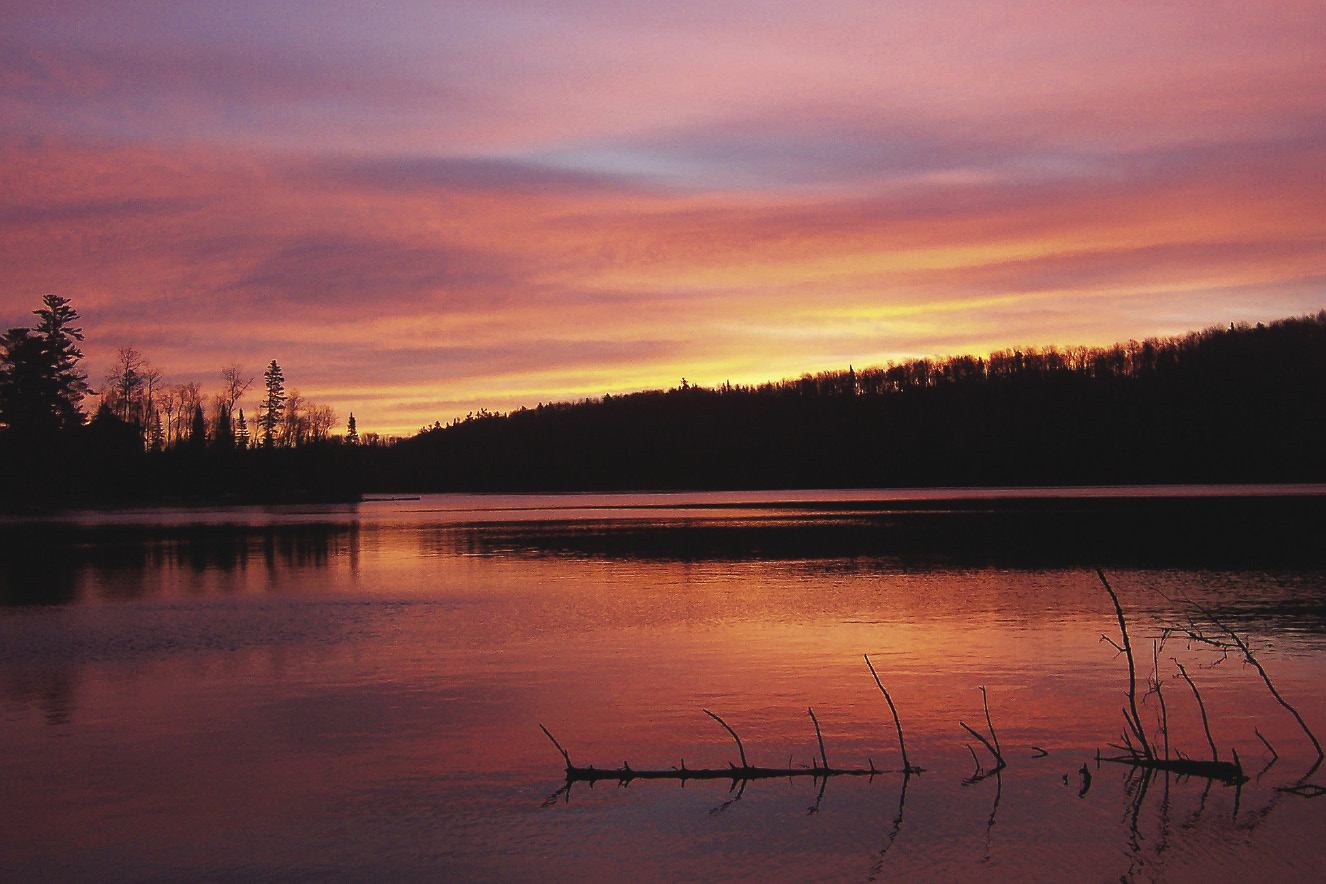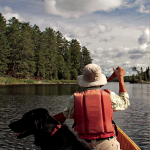By Ada Igoe
The easy decision when planning a summer paddling adventure is to head to the Boundary Waters, but anyone who’s decided to visit the BWCAW must then make the tougher secondary decision: whether to visit the east or west side of America’s most popular wilderness area. Known colloquially as the Ely and Gunflint Trail sides, Boundary Water locals are eager to have you believe that their side of the BWCAW is best.
It might seem a little strange that locals are so keen to point out the differences between the Ely and Gunflint sides. After all, you’ll find great natural beauty no matter which BWCAW entry point you travel through. It all boils down to vast tracts of water, rocks and trees tucked inside the Superior National Forest.
As someone who grew up in Grand Marais and has spent her adult life on the Gunflint Trail, I’ve always believed the eastern side of the Boundary Waters offers the superior canoeing experience.

The first contributing factor in the Gunflint Trail’s “superior” canoe country experience? Lake Superior. If you want to get to the Boundary Waters fast, you choose an entry point near Ely. If you want to go to the Boundary Waters and have the quintessential Northwoods experience as you go, you choose an entry point on the Gunflint Trail. The two-hour drive along Lake Superior from Duluth to Grand Marais on Highway 61 is as much part of the Gunflint Boundary Waters experience as the actual paddling is. When you spot the Duluth lift bridge, with Lake Superior sparkling in the distance from the top of Thompson Hill on I-35, you’ve already arrived, even though you’re still three hours away from your canoe put-in point.
The town of Ely is defined by its proximity to the Boundary Waters, while the Gunflint side’s small town hub, Grand Marais, is another thing the Gunflint side has going for it. Grand Marais is a unique mix of coastal town, arts community, and canoe country hub that’s a destination in and of itself. If you end your canoe trip by mid-morning, you can be “in town” in time to grab a pizza lunch at Sven and Ole’s and score a dozen of World’s Best Donuts for the road home. The town also tends to be on the cutting edge of tourism trends. Folk schools? Canoe expos? You read about them first in Grand Marais.
When you paddle off of the Gunflint Trail, you get to experience a close-knit (and 57-mile long) community. The Gunflint Trail is much more than a two-lane, dead end highway. It boasts community centers, a historical society, and a small museum. There’s a sense of cooperation on the trail, where businesses collaborate rather than compete. The community works in tandem with government agencies such as the U.S. Forest Service and the Minnesota DNR to keep boat landings, hiking trails, portages and other amenities in good repair to give visitors the best experience possible. Nowhere is that sense of community commonality felt more than at Trail Center Bar and Restaurant, where anglers who spent the day fishing from their motorboat on Saganaga Lake peacefully share the bar with people who just spent two weeks paddling in the Boundary Waters’ interior.
The first time you paddle through the Gunflint Boundary Waters, you might notice that fellow paddlers are fewer and farther between than in the western Boundary Waters. One of the most quantifiable differences between the Ely and Gunflint Trail Boundary Waters is the fact that BWCAW entry points accessed from the Gunflint Trail have lower daily entry quotas. This affords a sense of deeper wilderness and higher probability of seeing wildlife.
Once you make your way to the eastern side of the Boundary Waters, the “must-see” places to visit are countless: Seagull Lake; the Voyageur highway along the U.S./Canada border from Grand Portage through Saganaga Lake and beyond; Johnson’s Falls; the Rose Lake overlook on the Border Route Trail; the 420-rod Tuscarora portage; the beauty of Lizz Lake; Clearwater Lake’s towering palisades. You can spend a lifetime on the Gunflint Trail and still not know all of its secrets.
Still, it’s difficult to articulate what makes the Gunflint side so special, yet people sense the place’s mystique almost immediately. Last summer, I heard an Ely canoe trip veteran grumble before he headed out on his first Gunflint Trail BWCAW trip, “The Gunflint better be great, because it’s a way shorter drive to Ely.”
And guess what? He has already been back to the Gunflint Trail.





